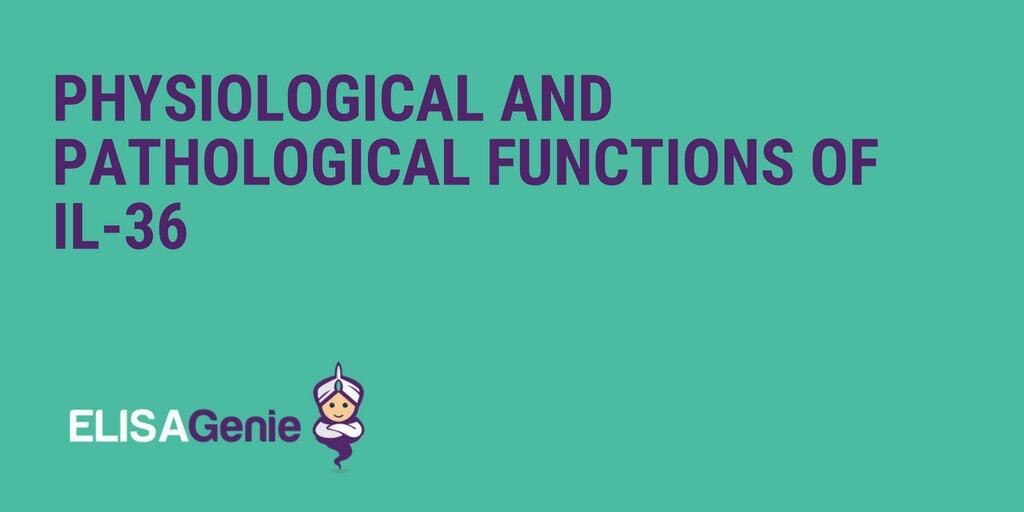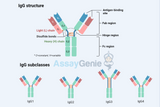Physiological and Pathological functions of IL-36
By Charlotte O'Donnell PhD
Similar to IL-33, IL-36R ligands are involved in maintaining intestinal homeostasis. Analogous to IL-33, d is localised to the nuclei of intestinal epithelial cells [1]. The presence of IL-36γ in the nucleus may be due to its role as an “alarmin”.
In murine models of intestinal damage such as the DSS colitis model and also in mechanical mucosal injury model, IL-36γ was released by the intestinal epithelial cells and shown to enhance mucosal healing. The effects of IL-36γ on colonic fibroblasts have been examined in a recent study. It was demonstrated that IL-36γ induced proliferation of murine fibroblasts to effect closure of wounds. IL-36 gamma also promoted mechanical wound repair. This is a complex task in which numerous pathways participate including Wnt ligand signals, cytokines and growth factors [2].
Key Antibodies
Pathophysiological functions of IL-36
Studies to date have demonstrated a role for IL-36 in many diverse diseases with an inflammatory component. Given the high expression of these ligands and the receptor on keratinocytes, much early work focussed on the role of IL-36 cytokines on cutaneous diseases. IL-36 is known to play a pathogenic role in chronic psoriatic disorders [3]. IL-36 was demonstrated to mediate crosstalk between keratinocytes and DCs that was vital for controlling the IL-23/IL-17/IL-22 axis during psoriatic development. IL-36α was also found to be increased in the joints of psoriatic and rheumatoid arthritis patients. IL-36 has also been implicated in pulmonary diseases such as asthma and chronic obstructive pulmonary disease (COPD) [4]. Indeed, plasma from acute COPD patients had lower IL-36α and IL-36RN levels than healthy controls. IL-36 may also play a role in joint disease, as IL-36β is expressed in human articular chondrocytes and stimulation with IL-36β induces proinflammatory cytokine production. The IL-36 family have also been implicated in obesity. IL-36α is present in adipose tissue resident macrophages, and both IL-36 alpha and IL-36γ promote inflammatory gene expression in mature adipocytes. Consistent with this, IL-36Ra was demonstrated to be downregulated in pre-adipocytes [5].
IL-36 in IBD
The role of IL-36 in IBD has recently been the focus of several studies. IL-36 is known to be dysregulated in psoriasis and these patients are at increased risk of developing IBD and vice versa. Therefore, this suggests IL-36 dysregulation may act through a common mechanism in these diseases [6]. Some studies suggest that IL-36 plays a pro-inflammatory role in IBD, while others have suggested that IL-36 promotes wound healing. Initial studies have shown that IL-36α and IL-36γ are upregulated in the colonic mucosa of UC patients. IL-36RN was reduced in these patients, which may contribute to increased activation of IL-36 signalling. DSS-induced colitis models have shown delayed wound healing in IL-36-/- mice. This was accompanied by a reduction in the barrier protective cytokine IL-22 and a reduction in the number of infiltrating neutrophils [7]. Interestingly, IL-36γ was found to be the most strongly upregulated gene on inflammatory macrophages that infiltrate the colon after DSS treatment. As well as epithelial cells and macrophages, human colonic subepithelial myofibroblasts (SEMFs) were also shown to express IL-36γ in response to IL-1β. Evidence in support of IL-36 promoting wound healing was shown in an IL-36R-/- mice, which demonstrated delayed wound healing in DSS-induced colitis. This was potentially due to a reduction in neutrophil recruitment [7]. This suggests there may be a very fine balance required in the level of neutrophils recruited. Low levels of neutrophil recruitment may lead to poor wound healing, while high levels of neutrophil recruitment may lead to prolonged inflammation and enhancement of IBD.
IL-36 in cancer
The link between IL-36 and cancer has only recently been investigated. To date two papers have investigated the role of IL-36 family members in cancer. IL-36α expression was found to correlate with mortality of hepatocellular carcinoma (HCC) patients [8]. These authors examined expression of IL-36α in a cohort of 345 patients by IHC and found IL-36α was expressed by nearly half of all HCC patients examined. IL-36α was found to be predominantly expressed in the cytoplasm of normal hepatocytes and well-differentiated HCC cells. Low expression of IL-36α was associated with increased tumour volume and increased TNM stage. Survival analysis showed that reduced expression of IL-36α was indicative of a poor prognosis for HCC patients, suggesting a possible anti-tumorigenic role for IL-36α in HCC. Cancers expressing high levels of IL-36α contained higher populations of intra-tumoral CD3+ and CD8+ tumour-infiltrating lymphocytes (TILs), but not CD4+ TILs. This suggests that IL-36α can attract CD3+ and CD8+ TILs and promote an adaptive T-cell immune response, which can impact the prognosis of HCC patients.
The second study injected B16 melanoma cells and 4T1 breast cancer cells overexpressing murine IL-36γ into WT mice and found tumour growth to be reduced in both models compared to vector controls. In the B16 melanoma model, the total number of CD8+ and CD4+ TILS and the percentage of NK and γδ T cells were increased in IL-36γ-expressing tumours compared to vector controls. Higher percentages of Foxp3+ CD4+ T cells, most likely T reg cells, were also detected in the IL-36γ-expressing tumours. Cells which have been shown to promote tumour growth such as type 1 lymphocytes and B cells were reduced in B16-IL-36γ compared to WT tumours. Overall these results suggest that a type 1 immune response was activated in B16-IL-36γ. This may have been regulated by the increased numbers of T reg cells observed [9]. These studies have identified a link between IL-36 agonists and tumorigenesis. Further studies are required to determine the role of additional IL-36 family members in other cancer types.
References
1. Lian, L.-H., et al., The Double-Stranded RNA Analogue Polyinosinic-Polycytidylic Acid Induces Keratinocyte Pyroptosis and Release of IL-36γ. Journal of Investigative Dermatology, 2012. 132(5): p. 1346-1353.
2. Pickert, G., et al., STAT3 links IL-22 signaling in intestinal epithelial cells to mucosal wound healing. The Journal of Experimental Medicine, 2009. 206(7): p. 1465-1472.
3. Blumberg, H., et al., Opposing activities of two novel members of the IL-1 ligand family regulate skin inflammation. J Exp Med, 2007. 204(11): p. 2603-14.
4. Parsanejad, R., et al., Distinct regulatory profiles of interleukins and chemokines in response to cigarette smoke condensate in normal human bronchial epithelial (NHBE) cells. Journal of Interferon and Cytokine Research, 2008. 28(12): p. 703-712.
5. Do, M.-S., et al., Inflammatory Gene Expression Patterns Revealed by DNA Microarray Analysis in TNF-α-treated SGBS Human Adipocytes. Yonsei Med J, 2006. 47(5): p. 729-736.
6. Weng, X., et al., Clustering of inflammatory bowel disease with immune mediated diseases among members of a northern california-managed care organization. Am J Gastroenterol, 2007. 102(7): p. 1429-35.
7. Medina-Contreras, O., et al., Cutting Edge: IL-36 Receptor Promotes Resolution of Intestinal Damage. J Immunol, 2016. 196(1): p. 34-8.
8. Pan, Q.Z., et al., Decreased expression of interleukin-36alpha correlates with poor prognosis in hepatocellular carcinoma. Cancer Immunol Immunother, 2013. 62(11): p. 1675-85.
9. Wang, X., et al., IL-36&IL36b; Transforms the Tumor Microenvironment and Promotes Type 1 Lymphocyte-Mediated Antitumor Immune Responses. Cancer Cell. 28(3): p. 296-306.
Recent Posts
-
Biomarker Testing: Advancements, Applications, and Future Directions
Biomarkers, measurable indicators of biological processes or responses to therapeutic interve …14th Apr 2024 -
Understanding T Cell Fatigue: Implications for Immune Function and Therapeutic Interventions
T cells are central players in adaptive immunity, responsible for recognizing and eliminating …9th Apr 2024 -
Comprehensive Analysis of Antibody Structure and Function
Antibodies, or immunoglobulins, stand as critical components of the immune system, orchestrating …2nd Apr 2024



